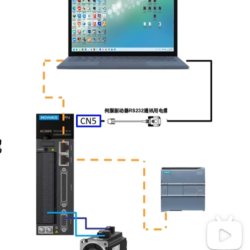The time when this patent of EVE was requested to be invalidated was October 29 and November 8, 2021, which means that the dispute between the two parties may have occurred around October last year, when EVE filed patent claims against BOSE and VARTA.
In fact, it happened to be on October 22 last year, EVE released a statement that in the 2021 (Autumn) Asia Bluetooth Headset Exhibition held in Shenzhen on September 28 last year, the PPT materials used by VARTA stating “the VARTA and Samsung dispute settled for the use of EVE infringing batteries”, were in an attempt to mislead the audience.
So it is uncertain whether the trigger of this case is the above-mentioned dispute between the two parties last year.
But the patent battle between VARTA and EVE has been going on for years.
It was a few years ago that EVE passed Samsung’s certification and squeezed into the giant’s circle of friends, taking up the market share that belonged to VARTA. Due to the good quality and cheap price of its products, moreover, better update iteration than VARTA, coupled with the rapid expansion of production capacity, EVE is bringing large pressure on VARTA.
In December 2019, VARTA launched series of patent suits successively in Munich, Braunschweig, Mannheim, Germany, the United States of America Texas court against the e-commerce giants like Amazon, Best Buy and Costco, claiming that the Bluetooth headset bean-type batteries sold on the three major e-commerce platforms infringed its patent rights.
VARTA started to develop button lithium battery products around 2009, supplying for Apple, Samsung, Sony, JBL and other first-tier brands.
After VARTA sued the three major e-commerce companies, it didn’t take too long for VARTA’s old customer Samsung to be dragged to the dock by VARTA as well. However, these are not the final target of VARTA. A series of indictments showed that VARTA’s sword is pointed in the same direction – the micro battery from the Chinese company EVE.
The court filings in VARTA’s lawsuit against the three e-commerce platforms stated that “the miniature batteries in question provide rechargeable power for wireless headphones and other electronic devices that use such batteries” and included “spiral windings with their ends facing the axis with respect to the flat bottom area “The design of this battery was very similar to VARTA’s patent-protected design, which offers outstanding mechanical strength characteristics, higher power density and better space utilization.
VARTA filed patent applications in the U.S. Patent Office between October 2015 and October 2017 for a portfolio of international patents on various aspects of these miniature battery technologies, receiving three U.S. Patent Nos. 9153835, 9496581 and 9799913, all three of which related to “button cells (miniature batteries) and methods of making them These three patents are all related to “coin cell batteries and methods of manufacturing them.
The miniature button battery was mainly used in small wearable devices and first came into the public eye because Apple used it in the AirPod Pro. Compared with the previous generation, the AirPod Pro with the button battery was not only more compact in appearance, but also greatly enhanced the range, which was undoubtedly a huge progress for the development of TWS headphones. Mainstream TWS headphones with a small buckle battery was also a major trend.
In the field of button batteries, VARTA is the technology leader, monopolizing most patents in the field. In 2019, with the explosion of global TWS production capacity, VARTA’s production can only meet Apple’s needs, leading Samsung to transfer a large number of orders to EVE. VARTA filed patent lawsuit against Samsung because Samsung cell phone Galaxy Buds wireless Bluetooth headset used similar micro batteries in manufacturing process. The manufacturer of these batteries is EVE.
Patents are a powerful competitive weapon for enterprises, especially in the field of emerging technologies, behind each patent means huge research and development funds, long-term investment in research and development and huge research and development risks, is the strong support of the core competitiveness of enterprises. Therefore, Amazon Samsung and other multinational companies are generally not willing to take risks for patent issues. VARTA’s lawsuit against Samsung and other manufacturers is actually a disguised pressure on Samsung’s supplier behind, the Chinese company EVE.
In VARTA’s lawsuit against Amazon, VARTA directly pointed out that the wireless Bluetooth headset bean-type lithium battery produced by Lithium Elite infringed VARTA’s patents, requiring Amazon to take down the goods. Amazon asked EVE to provide evidence.
EVE then responded to the lawsuit, and the two sides pulled off the fight.
In this case, EVE provided testimony of non-infringement that the company’s bean-type battery was substantially different from the patent in dispute. Later, VARTA withdrew the lawsuit.
Subsequently, in January 2020, VARTA applied for a temporary injunction in the German Court of Braunschweig court against EVE. EVE responded to the lawsuit. After the hearing, VARTA withdrew its application for a temporary injunction filed in the Braunschweig court.
According to German law, this VARTA was not allowed to file another temporary injunction based on the same cause of action.
In February 2020, the case was transferred to the U.S. District Court for the Eastern District of Texas to open a new round of litigation. The battle was waged in the United States. EVE responded by considering litigations to fight back.
On the evening of March 25, EVE released an announcement saying that it had not yet received VARTA’s lawsuit.
On April 3, EVE’s application for a non-public offering of shares was formally accepted by the Securities Regulatory Commission, with the proposed proceeds accounting for RMB 1.05 billion for a bean-type lithium-ion battery project for TWS applications.
In August, VARTA ended patent disputes with Samsung and other distributors, each reaching a settlement. VARTA hoped to expand its business relationship with Samsung.
This ended the patent war for VARTA.
Reconciliation
With the patent war between several parties moving toward a settlement, the originally treacherous button battery market instantly calmed down, but is that really the case?
In August, in Samsung’s latest release of TWS headphones released on Galaxy Buds Live, Samsung used VARTA’s CP1254 A3 buckle battery. On the other side EVE financing continued, further proceeding to Guangdong Huizhou, Hubei Jingmen and other factories on bean-type lithium-ion battery expansion plans. Temporary calm down patent litigation was intensifying the changes in the TWS headset buckle battery market landscape.
In the very beginning of the VARTA patent litigation, industry insiders pointed out that VARTA’s move was by no means to retrieve lost customers Samsung from EVE. Moreover, it is to deter potential buckle battery manufacturers through this move to monopolize its industry position. In fact, it is justified for VARTA’s to act towards EVE. On one hand, VARTA’s own battery production capacity in the face of the rapidly expanding TWS headset market appeared to be seriously inadequate, resulting in the continuous loss of core customers; while on the other hand, EVE bean-type batteries in performance, production capacity, cost, has caught up with the gradual gap, and even in some aspects has surpassed VARTA. And in mainland China, there is also far more than one EVE.
According to Sunrise Big Data research data, global TWS headset sales reached 400 million pairs in 2020. The future TWS headset market will continue to grow at a high rate, and shipments will reach 700 million units by this year 2022. The average monthly production capacity of VARTA was around 7 million, and with the increased production already, the annual shipment was only 80 million by average. In terms of the button battery alone, it can meet the supply of 40 million headphones based on the conversion of two batteries for one pair of headphones.
In the TWS market, brands generally used button-type batteries to reduce the weight and range of the headset, thus the market vacated by VARTA is huge. On the other hand, including EVE, Peng Hui Energy, Zijian Electronics, Guangdong Microelectronics, Ganfeng Lithium, a dozen domestic TWS battery companies have formed the head alliance and built patent groups to compete with VARTA. In the production capacity domestic TWS companies also exceeded VARTA. It is estimated that a number of domestic manufacturers had the production capacity to fill this huge gap in the TWS button lithium battery market.
However, it is due to the increasing demand for button batteries in the market, TWS battery patent evasion has become increasingly difficult. To get a piece of the TWS market worldwide, the enterprise itself must have its own core patents, as well as a certain degree of patent group, as a way to deal with patent infringement litigation disputes. Patents are not only offensive weapons, but also defensive tools.
At the beginning of TWS headphones, most of the batteries used by mainstream headphone brands were pin-type. The first generation of Airpods, for example, headphones used pin-type cylindrical battery. Due to the elongated body of the pin-type battery, Airpods designs had to take into account the length of the battery with a long “tail” in Airpods. Once listed, it has caused a lot of jokes and topics on the appearance.
Button battery is more compact in size, making the TWS greatly free in design, and soon got large orders from a majority of manufacturers. The uniqueness of VARTA button battery is mainly reflected in his winding process. From the registered patents of VARTA TWS batteries, the specific patents do not involve the winding process, but rather the shell structure, shell packaging, structural components (pole and lug) connection, and safety components.
Among them, in the shell structure, it is a three-component straight buckle battery, three components including the upper and lower pole cover and sealing ring. The core is wound with the publicly announced spiral winding technology.
In the way of connecting the pole piece to the pole lug, VARTA patent has shown two ways. The first way is to use the winding design, winding wrapping edge, the pole piece leaving white area directly connected to the pole cover, through physical heat pressing or welding. The second is to use a process to interlock the anode with the recess of the pole cover.
In addition, in terms of safety components, the VARTA invention patent describes external heating safeties such as PTC to form over-temperature protection for the battery core. The above four aspects constituted the core patent group of VARTA’s button battery.
The main patents involved in EVE TWS battery are mainly reflected in the sealing structure of the battery, which is different from the sealing structure of VARTA. EVE uses multiple envelopes in the form of sealing. There is a special seal between the two enclosures, and the connection between the pole piece and the pole lug. EVE adopts the white folded edge, eliminating the welding process of the pole lug.
In addition to EVE, TWS battery patents of Peng Hui Energy and Ganfeng Lithium are benchmarking VARTA’s the outer shell and the connection between the pole piece and the pole lug.
In the battery structure, Penghui Energy divides the battery into two components, and the pole cover is designed into a T-shape to increase the sealing strength. The lower pole cover top increases the space utilization. In terms of the connection between the pole piece and the pole lug, the positive pole piece of Penghui Energy is left with a white folded edge, while the negative pole adopts a point-welded pole lug with external fluid collection technology.
Ganfeng Lithium adopts the process of built-in soft-clad battery cell, steel shell and magnetic shielding film injection molding, so that the steel shell on the battery surface is not charged, and the TWS headset is wireless connected without magnetoelectric interference from the battery, which improves the sound quality and call quality of the TWS headset. The design of the shell has been done to improve the performance.
Purple Construction Electronics (VDL) has pioneered the laminated sheet process on the TWS battery patent, thus bypassing the VARTA winding process. VDL has also applied for a complete chain of button battery patents. In addition, VDL has also made improvements in the way the pole piece is connected to the pole lug, also by thickening the cell with the help of the thickness of the outer base material of the stacked winding, and improving the strength of the pole lug welding to form its own patent.
Winding technology itself has a history of decades, and widely used in all kinds of cylindrical, square lithium-ion battery production. It belongs to the public technology. This patent alone does not set technical patent barriers for EVE, Peng Hui Energy, or Ganfeng lithium. But in essence, they did not completely bypass the patent group of VARTA’s winding process. Only VDL did.
VARTA’s several patent wars down, the domestic button battery market has changed.
According to news from the industry, domestic manufacturers are now required to sign a guarantee when receiving orders, and once the products are subject to losses caused by patent litigations overseas, the consequences will be borne by the manufacturers. VARTA’s patent deterrent has come into effect, especially in the overseas layout of the brand. The battery patent avoidance awareness has been strengthened. For manufacturers without core patents to protect themselves, their path will be more and more difficult. On the other hand, the head giants have now monopolized the vast majority of the button battery patents, making new entrants face higher barriers to intellectual property rights.
In fact, even with patent protection, it is not easy for the head manufacturers to deal with VARTA patent litigations. Once being dragged into lawsuits, even if you can get rid of the lawsuit, big brands will try to avoid trouble when selecting the source of supply. This is the reason why VARTA has litigated so many times. “VARTA is essentially grabbing the cake, not breaking it.” Industry personnel said in their comments on the matter.
Nevertheless, domestic manufacturers have not expressed many concerns. On one hand, the outbreak of the incremental volume of TWS headphones can keep the domestic brands alive for a few days; on the other hand, due to the high cost of button-type batteries, they are currently used only in the high-end headset products, while the low-end is still dominated by soft pack batteries, whose market has not been directly affected by the patent wars. And the main shipments of TWS headphones are also dominated by low-end products. But with the further coverage of the button batteries, it is only a matter of time before the lower end of the market is affected.














